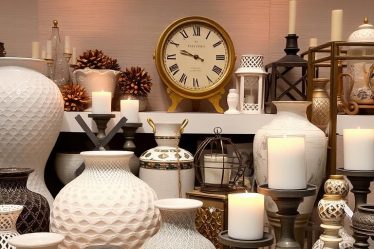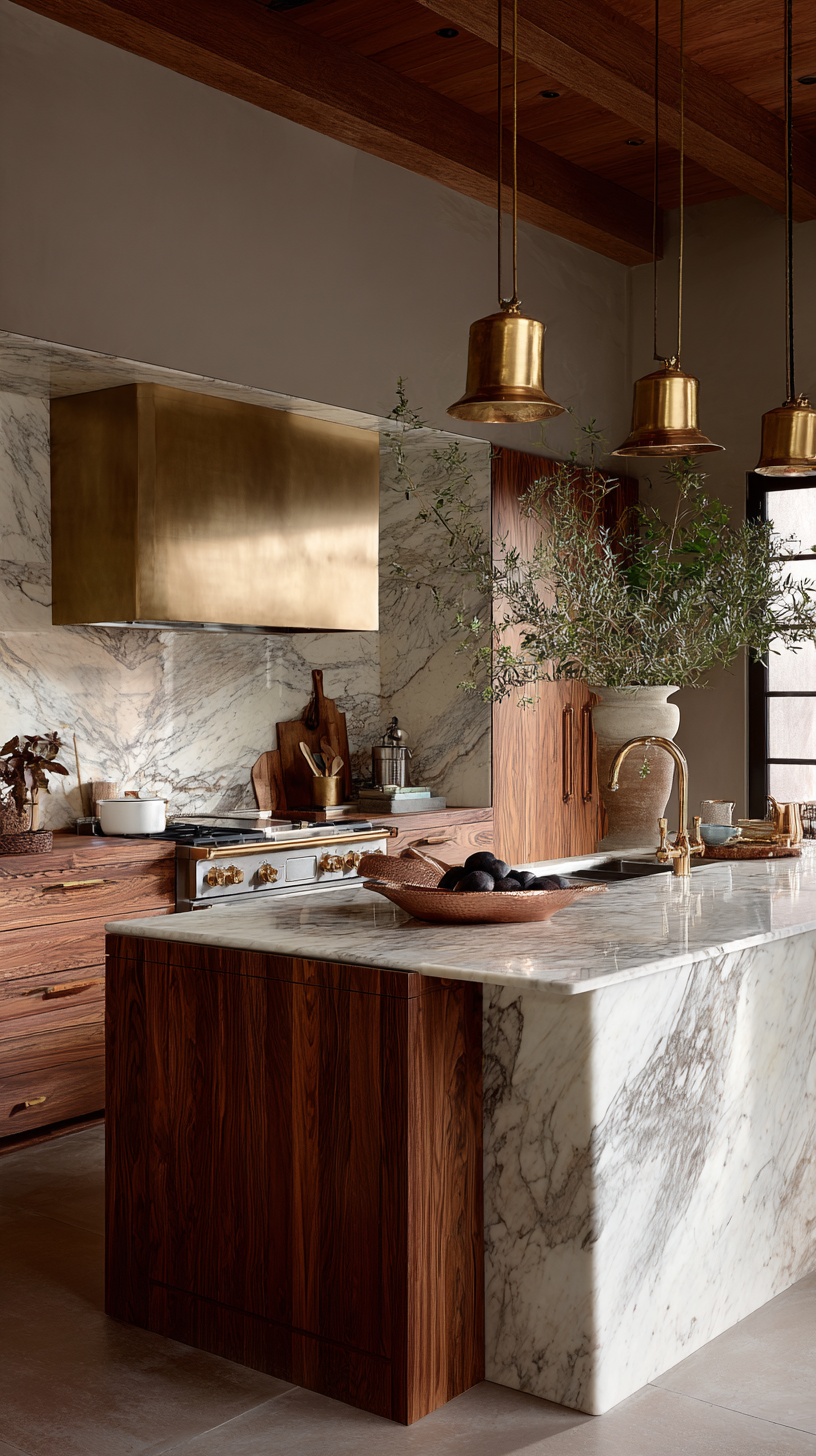
Are you ready to make your living space a modern elegance haven? In 2025, home decor is changing. Now, we focus on making spaces beautiful, useful, and green.
People want new ways to update their homes. They mix beauty with useful ideas. This article will show you the best design trends for 2025. You’ll learn how to make your home stylish and practical.
Key Takeaways
- Discover the latest trends in modern interiors for 2025
- Learn how to incorporate sustainability into your home decor
- Explore innovative ways to refresh your living space
- Find out how to blend aesthetics with practical solutions
- Get tips on elevating your home into a sanctuary of modern elegance
The Psychology of Home Design
Understanding the psychology behind home design is key to creating spaces that uplift our lives. The design of a space can change our mood, productivity, and wellbeing.
How Spaces Affect Mood and Wellbeing
The design of a home greatly affects the mood and wellbeing of those who live there. Elements like natural light, indoor plants, and calming colors help us relax and feel refreshed. For example, adding wood and stone can warm up a home with their natural feel.
Creating Personalized Environments
Creating spaces that show our personality and needs makes us feel at home. This is done by using decorating styles and design inspiration that speak to us. For instance, using interior decorating tips that focus on both function and beauty can make a space welcoming and balanced.
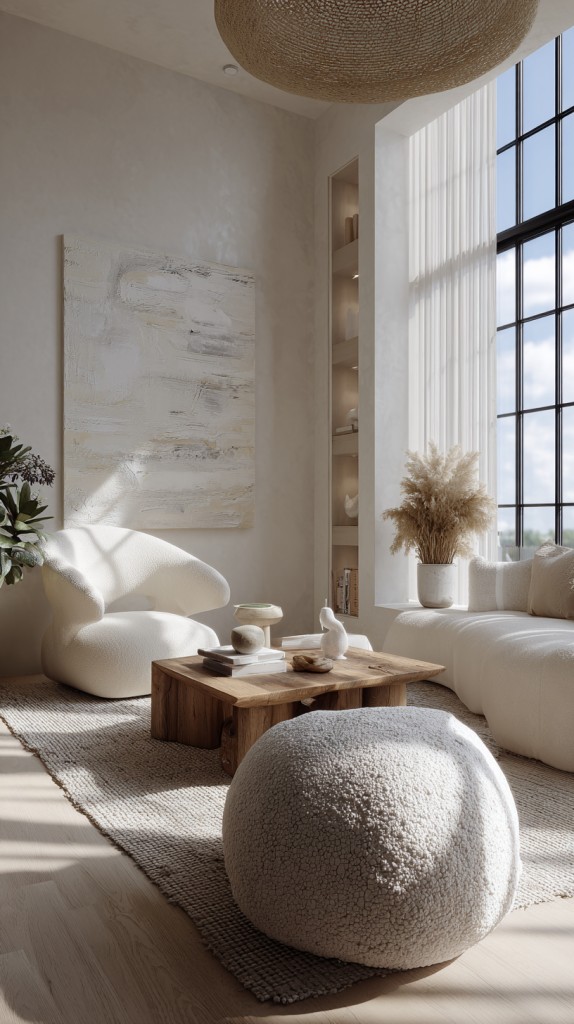


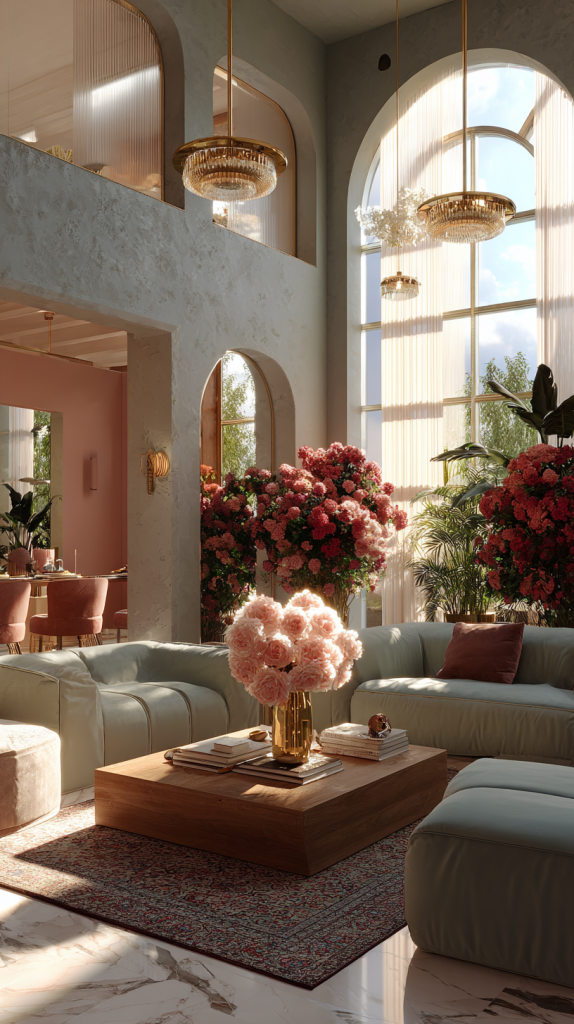
| Design Element | Impact on Mood | Wellbeing Benefit |
|---|---|---|
| Natural Light | Boosts mood and energy | Regulates circadian rhythms |
| Indoor Plants | Reduces stress and anxiety | Purifies the air and promotes health |
| Calming Colors | Promotes relaxation and calmness | Reduces stress and improves sleep |
2025 Interior Design Trends Reshaping American Homes
The world of interior design is changing fast. Trends now bring nature inside and change how we see space. 2025 is all about new ideas and creativity in home design.
Biophilic Elements and Nature-Inspired Spaces
Biophilic design is getting more popular. It mixes natural elements with indoor spaces for a better connection with the outdoors. Big windows, plants, and materials like wood and stone are key. Nature-inspired spaces make homes look better and feel healthier.


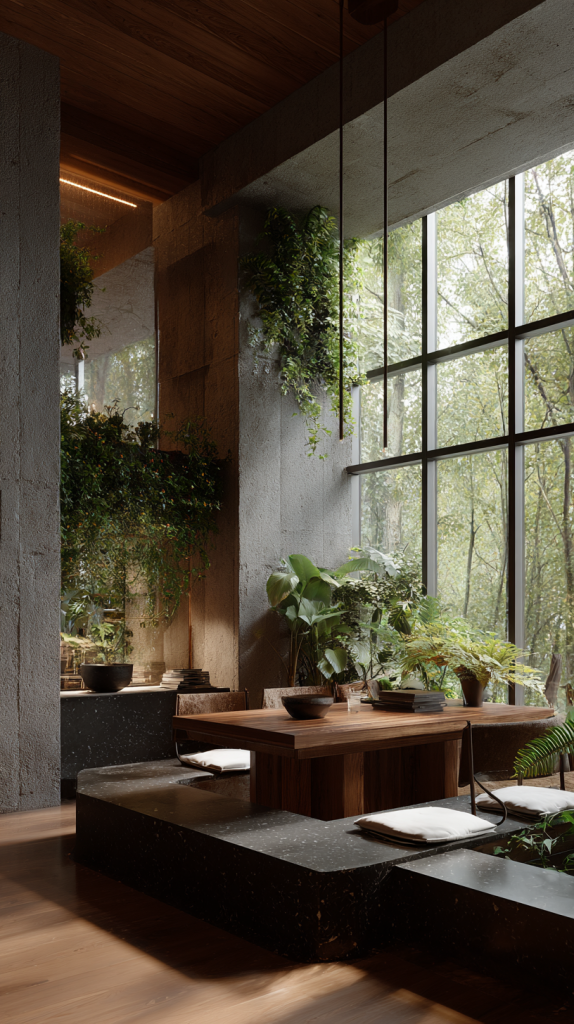
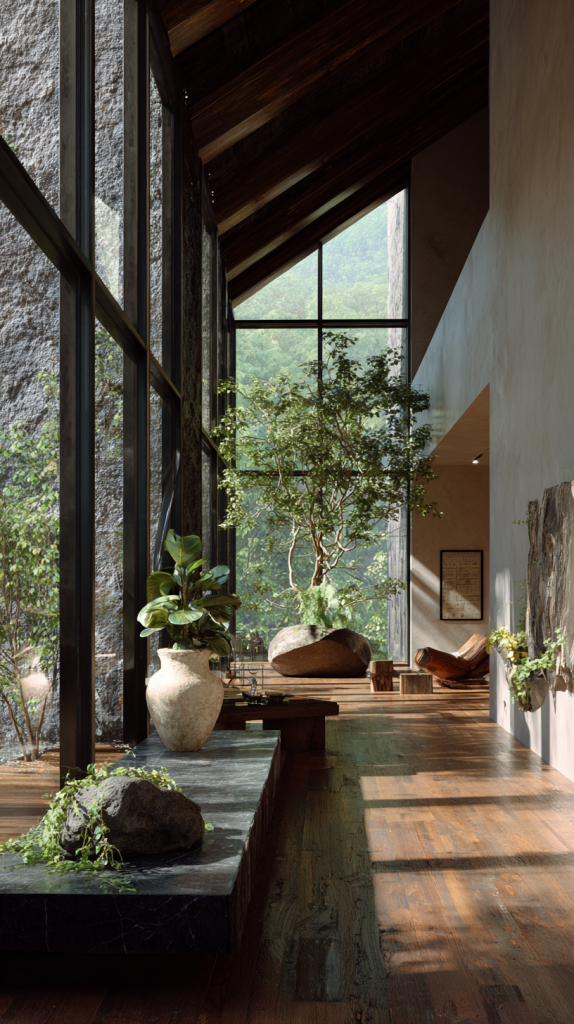
Curved Furniture and Organic Shapes
Curved furniture and shapes are now trendy. They add softness and elegance to rooms. Spaces feel more lively and welcoming with curved sofas and round coffee tables.
Maximalist vs. Minimalist Approaches
The debate between maximalist and minimalist styles is ongoing. Maximalist interiors have rich textures, bold colors, and unique decor. Minimalist spaces focus on simplicity, clean lines, and fewer colors. Your choice depends on what you like and the mood you want in your space.
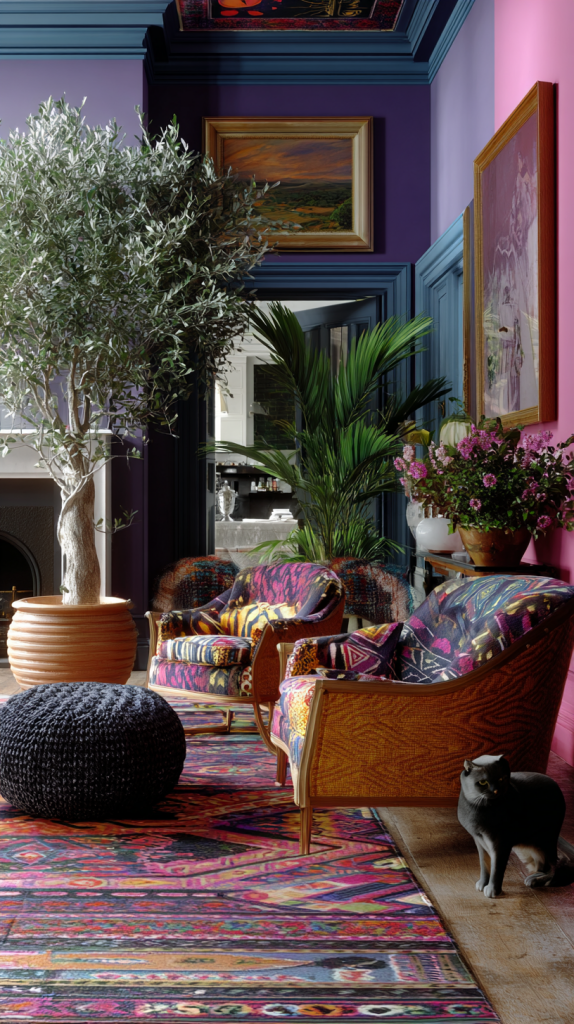
| Design Element | Maximalist | Minimalist |
|---|---|---|
| Color Palette | Rich, bold colors | Limited, neutral tones |
| Furniture | Ornate, eclectic pieces | Simple, functional designs |
| Textures | Multiple, layered textures | Few, carefully selected textures |
Color Psychology in Interior Design
Color plays a huge role in interior design. It can change how a space feels and what emotions it brings out. Knowing how colors affect us helps create spaces that look good and feel right.
Earth Tones and Natural Palettes
Earthy neutrals like terracotta and sage are becoming popular. They make rooms feel calm and peaceful. Earth tones also make spaces feel warmer and more welcoming.
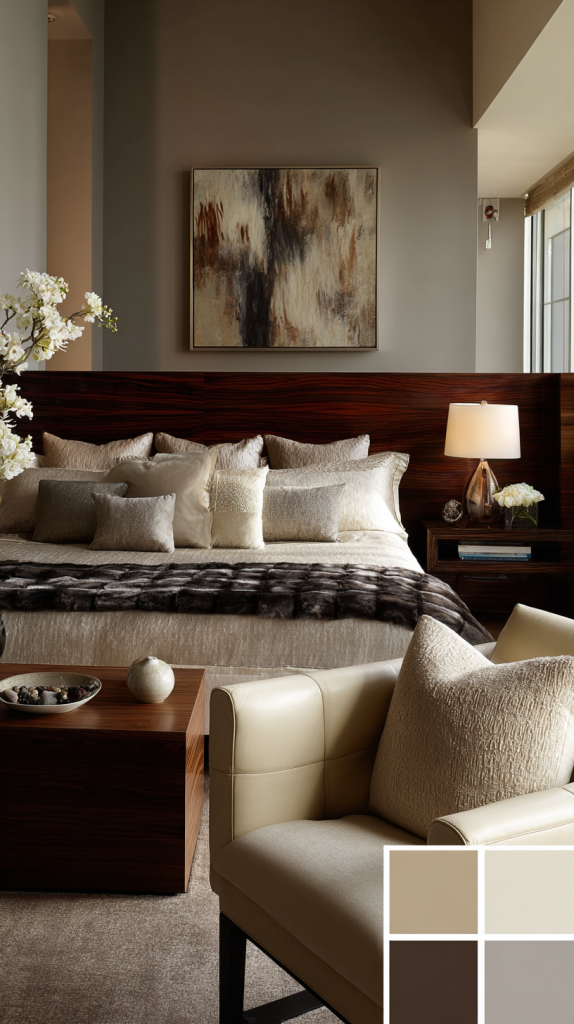
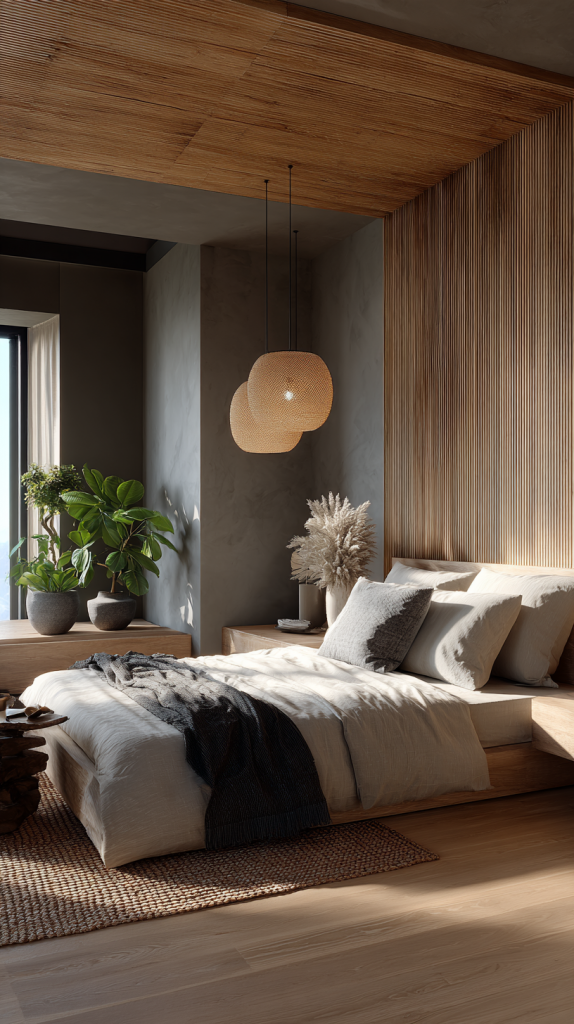
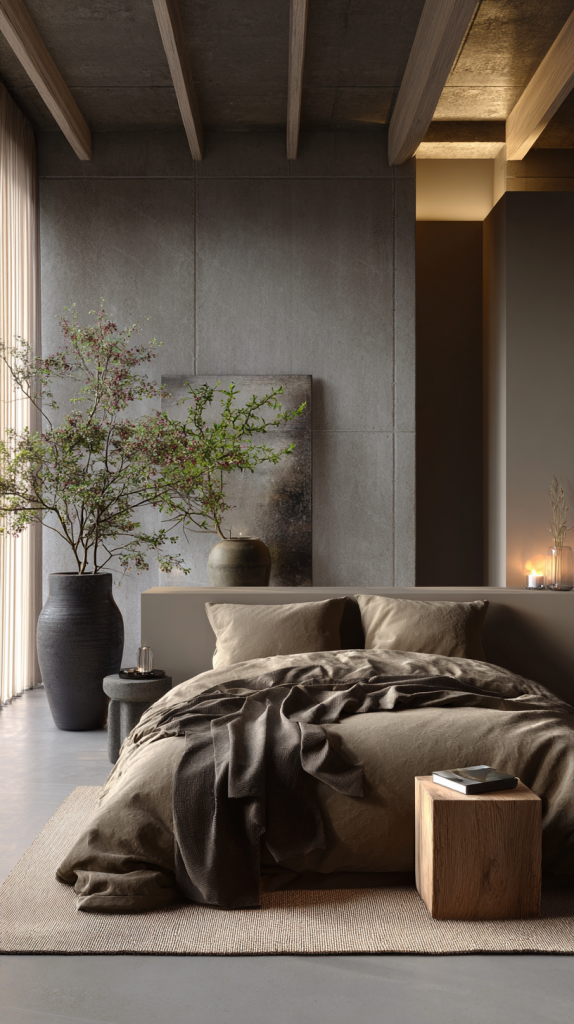
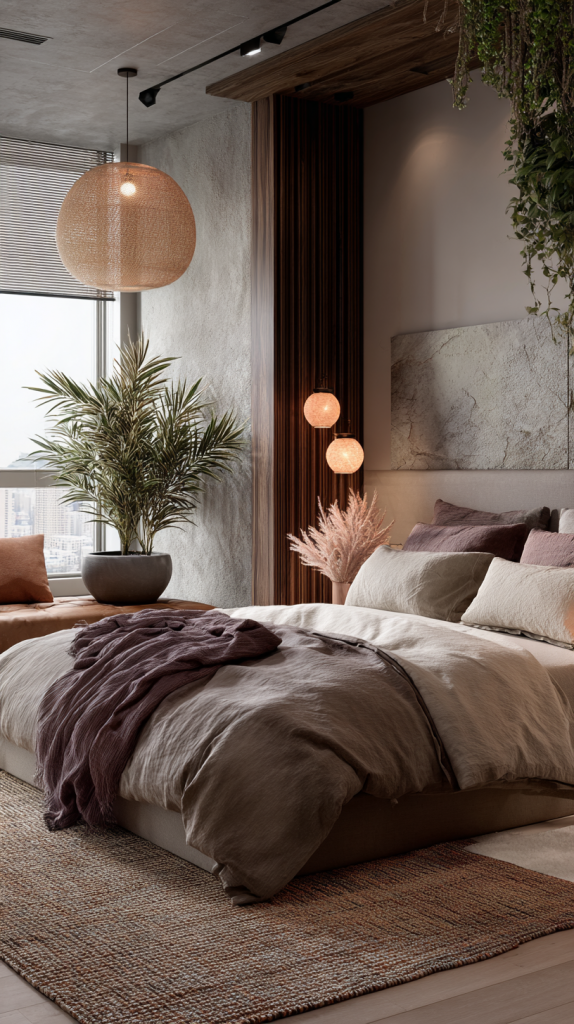
Bold Accent Colors and Statement Walls
Bold colors are back, adding personality to rooms. A statement wall can be a room’s highlight, bringing energy and life. Used well, bold colors can really make a design pop.


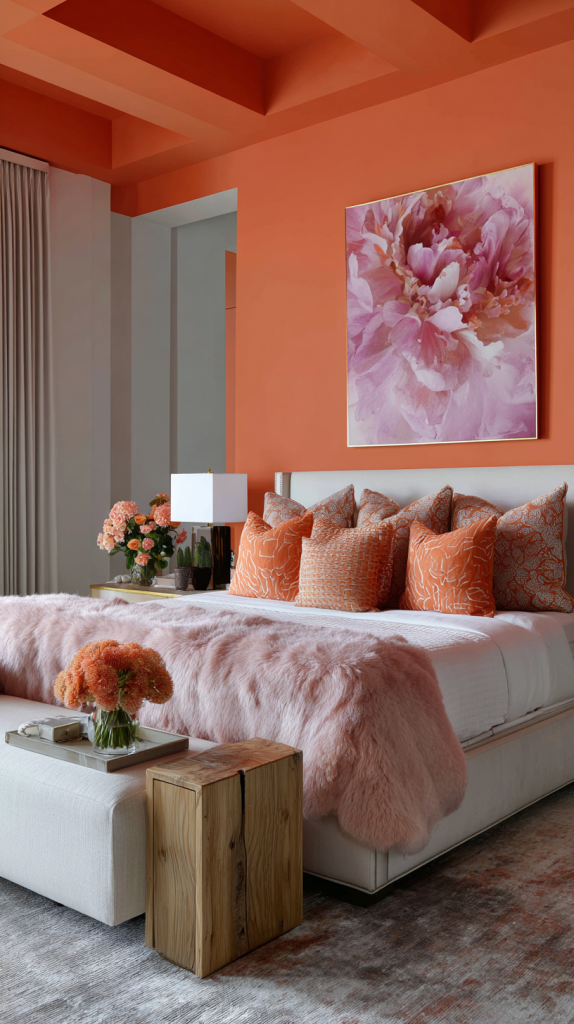
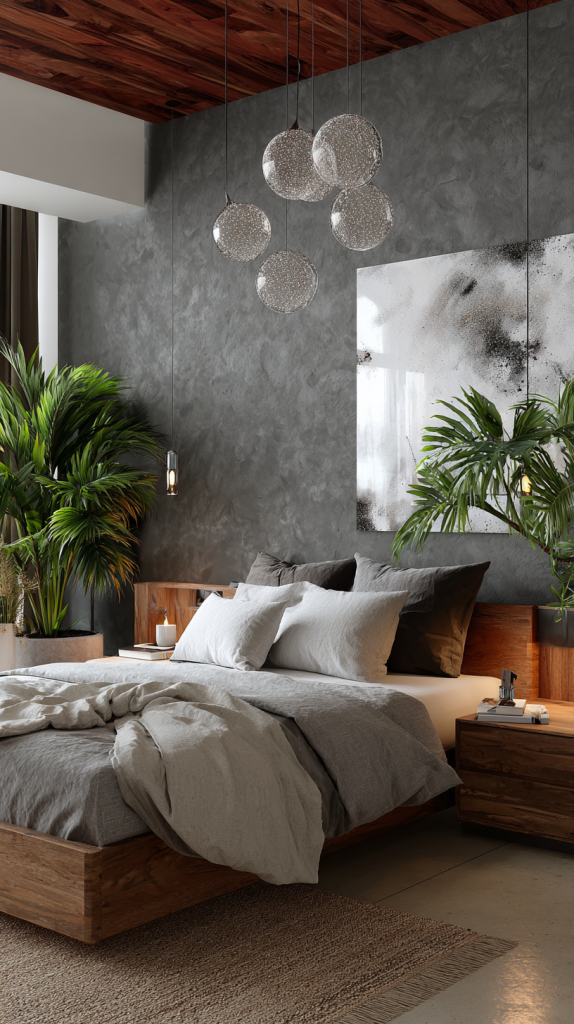
Monochromatic Schemes with Textural Depth
Monochromatic schemes with different textures are trending. They offer a unified look with interest. By mixing textures in one color, designers can create a sophisticated, cohesive space.
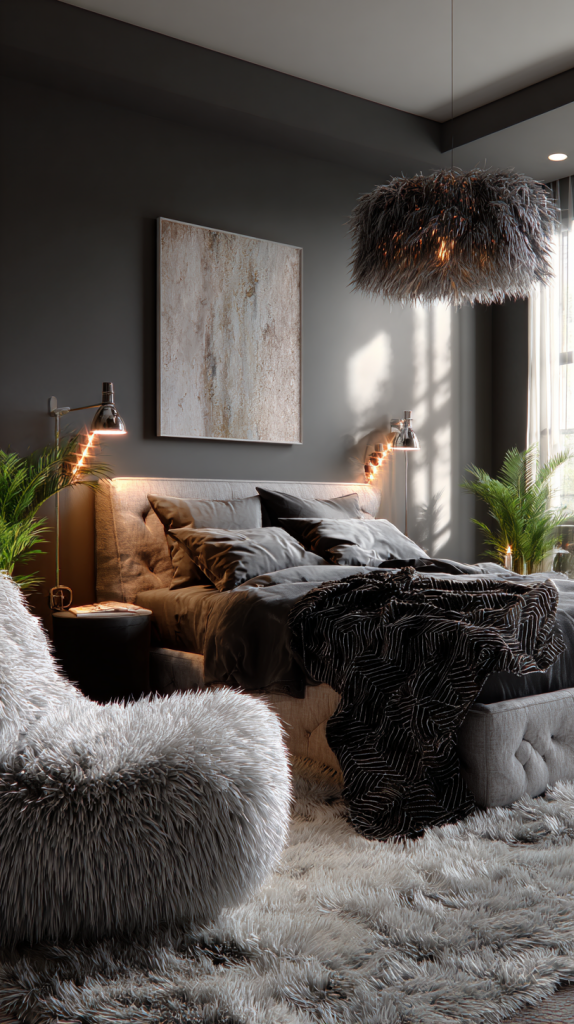

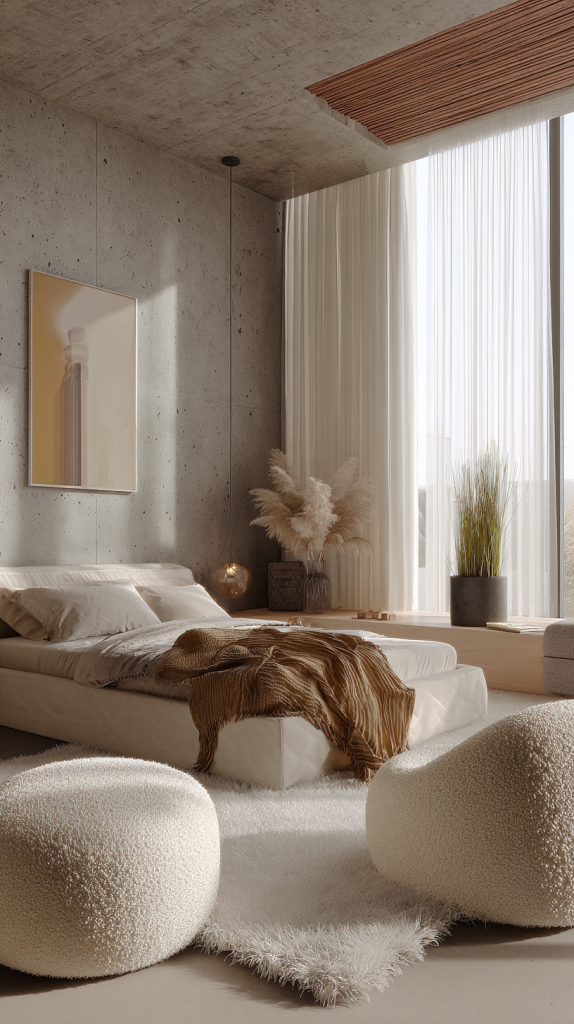
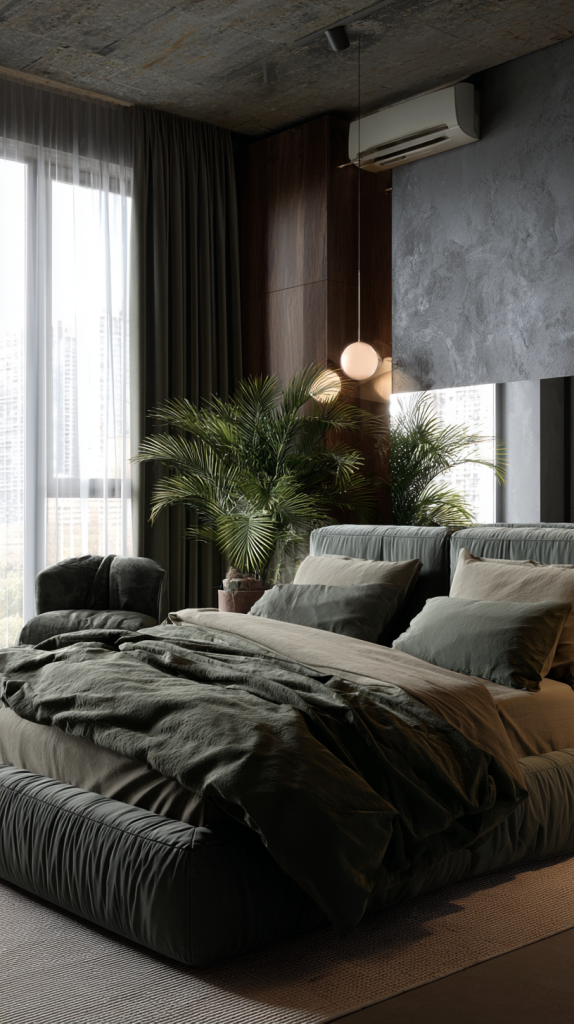
| Color Scheme | Psychological Impact | Design Tip |
|---|---|---|
| Earth Tones | Calming, Grounding | Use natural materials like wood and stone |
| Bold Accents | Energizing, Personalizing | Balance bold colors with neutral backgrounds |
| Monochromatic | Cohesive, Sophisticated | Vary texture to add depth |
Using color psychology in design can make spaces beautiful and emotionally meaningful. Whether you want a calm spot or a lively area, color is key. It helps you achieve your design dreams.
Material Selection for Modern Interiors
In modern interiors, choosing the right materials is key. It shapes the look and feel of a room. The materials you pick affect the room’s vibe, how green it is, and how long it lasts.
Sustainable and Eco-Friendly Options
More people want eco-friendly materials in their homes. Vegan leathers and reclaimed wood are favorites. They’re good for the planet and make rooms stand out.
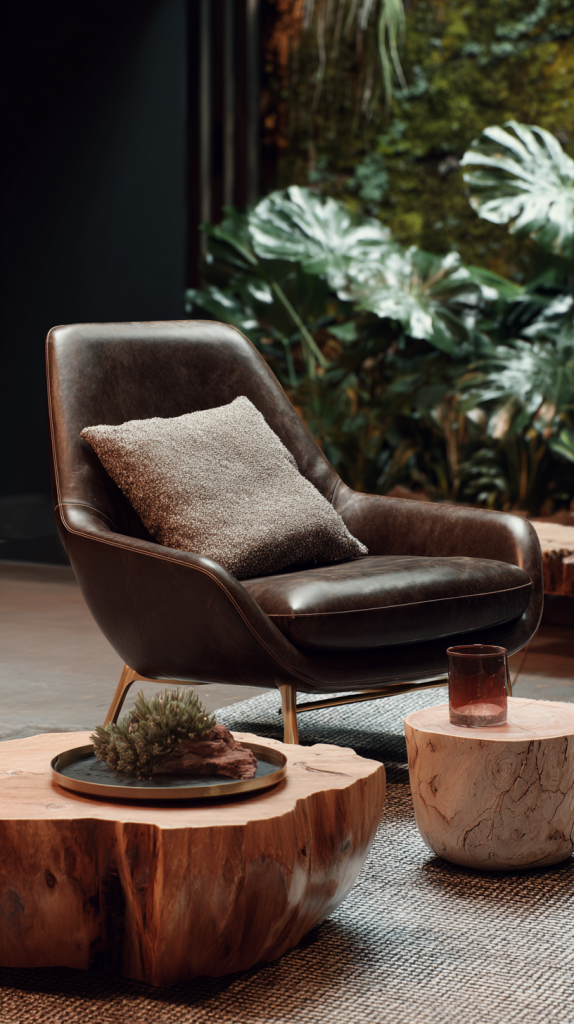
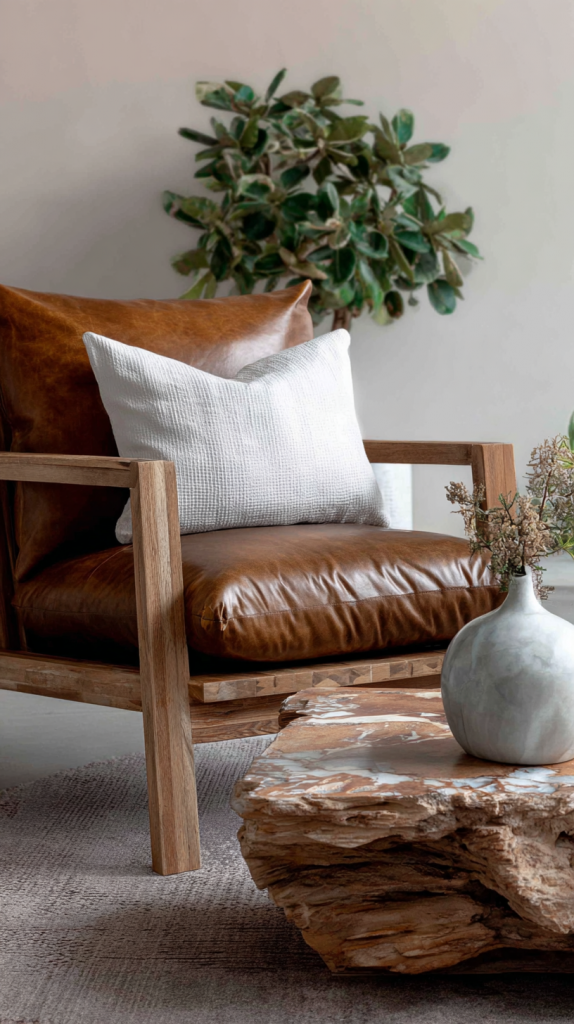

Mixed Metals and Contrasting Finishes
Using different metals and finishes is big now. It makes rooms look rich and interesting. Mixing brass, copper, and silver creates a unique, stylish vibe.
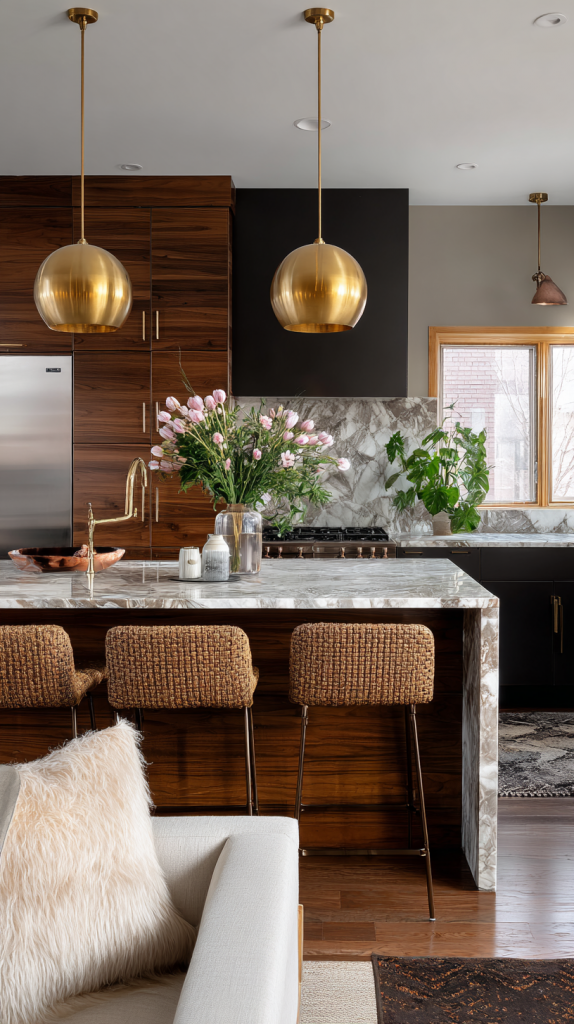

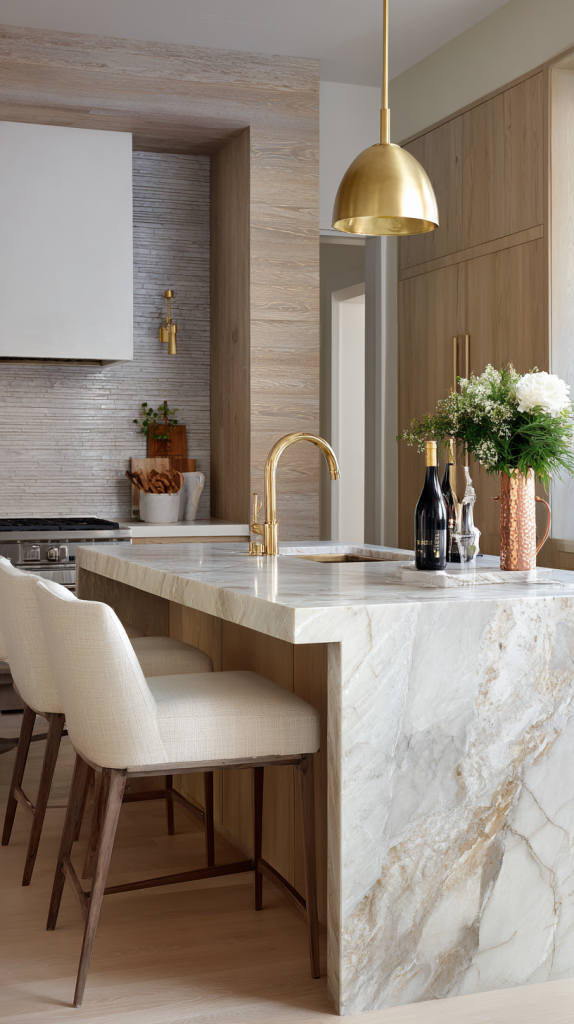
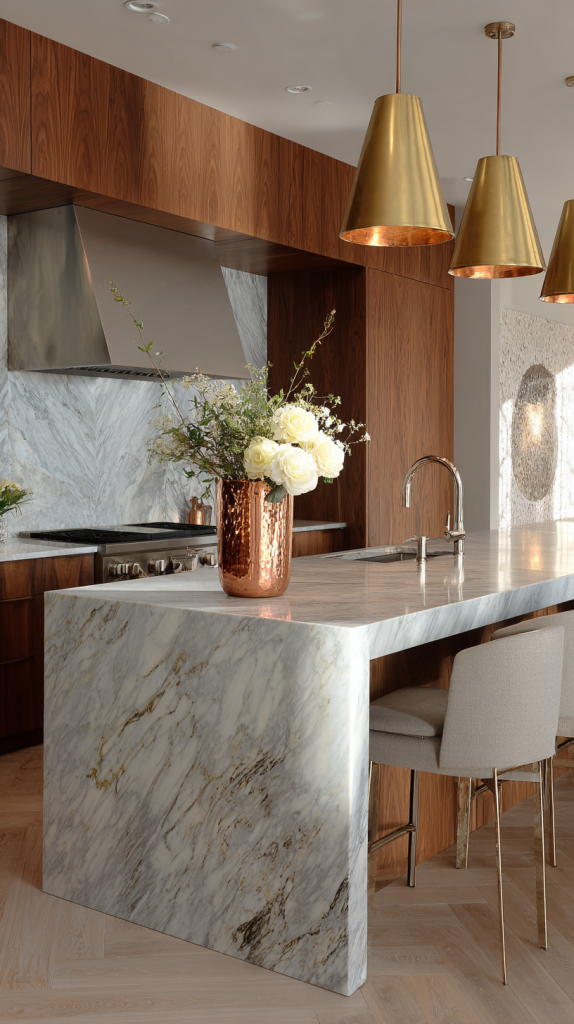
Textural Elements: Bouclé, Rattan, and Terrazzo
Bouclé, rattan, and terrazzo add a special touch to rooms. They make spaces feel cozy and inviting. These materials bring a natural feel to any room.
Furniture Selection: Balancing Style and Function
Finding the right mix of style and function in furniture is key. Pieces not only set the room’s look but also make it work well.
Investment Pieces vs. Trend Items
Choosing timeless furniture can make a room look more sophisticated. Unlike trendy items, quality furniture lasts longer. A classic leather sofa or a wooden dining table can be the room’s focal point.
Space-Saving Solutions
In small spaces, the right furniture makes all the difference. Items like storage ottomans or nesting tables save space while keeping things stylish.
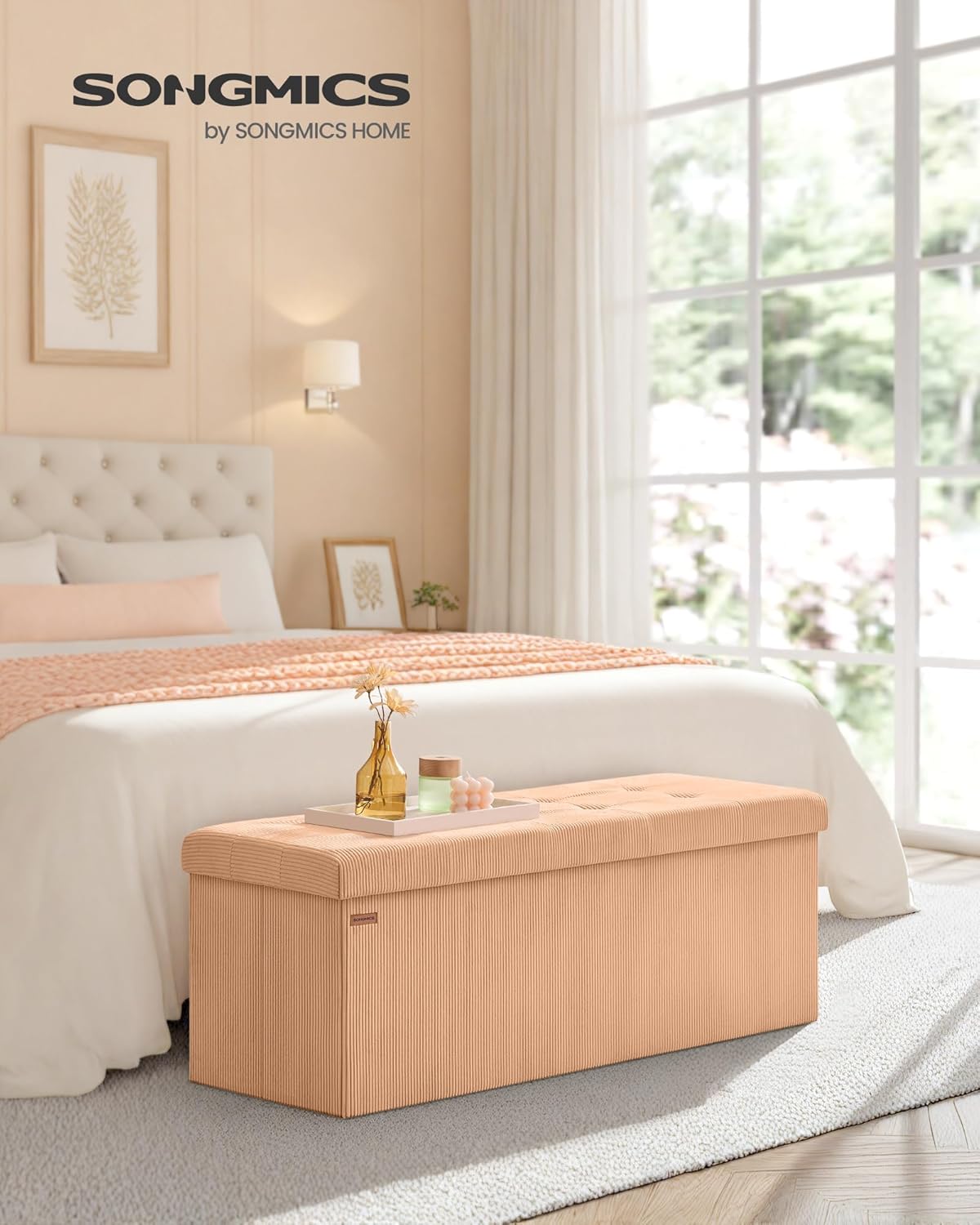
his storage ottoman from the has a foldable design that allows quick setup in seconds by simply inserting the bottom panel. Easily fold and store it under the bed or in a closet when not in use
Vintage and Upcycled Furniture
Adding vintage or upcycled furniture brings a special touch. It’s good for the planet and adds a unique story to your space. A refurbished armchair or a coffee table made from reclaimed wood can make a room stand out.
Room-by-Room Interior Design Strategies
To make your home feel right, focus on each room’s needs. Different spaces have different roles. Knowing these roles helps in designing each area well.
Living Room Layout Fundamentals
The living room is the heart of your home. It’s where families come together and make memories.
Conversation Areas and Traffic Flow
It’s important to create spots for talking and keep the room moving. Arrange your furniture to encourage chats and keep paths open. Here’s an example
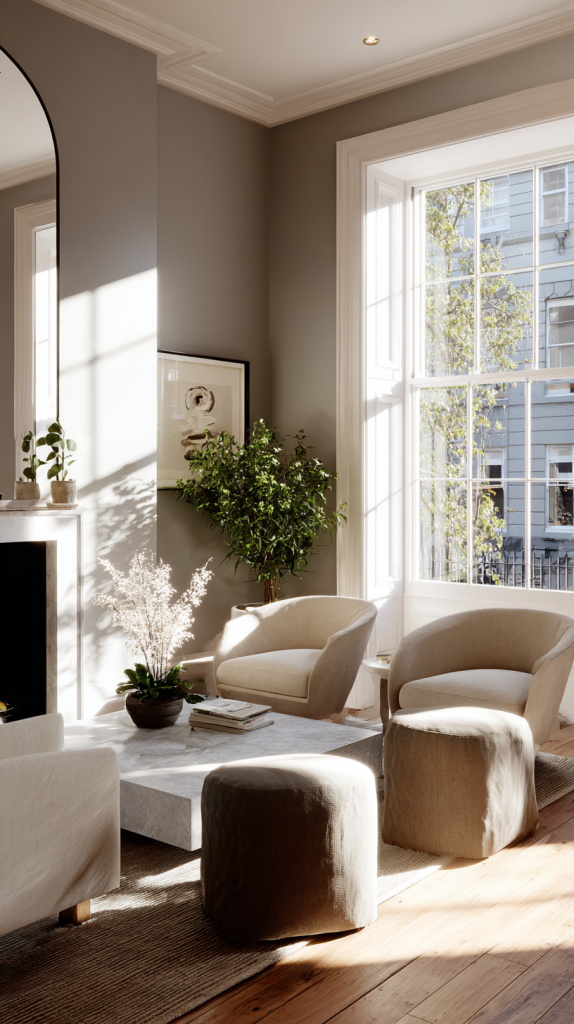
Entertainment Centers and Focal Points
An entertainment center can be the room’s centerpiece. Use it to tie your furniture together and make the room look unified.
Kitchen Design Innovations
Kitchens are key spaces that need smart design. New kitchen ideas make these areas more useful and fun.
Work Triangle Optimization
Improving the work triangle (the path between sink, stove, and fridge) boosts kitchen efficiency.
Storage Solutions and Island Functionality
Adding lots of storage and a useful island makes the kitchen better to use.

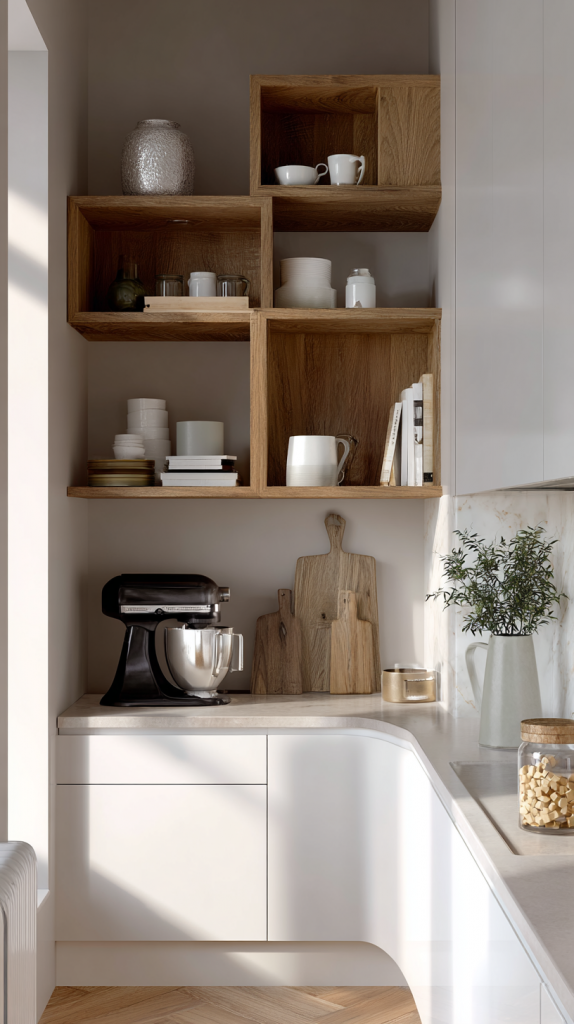

| Room | Design Focus | Key Elements |
|---|---|---|
| Living Room | Comfort and Conversation | Furniture arrangement, Focal points |
| Kitchen | Functionality and Efficiency | Work triangle, Storage, Island functionality |
| Bedroom | Relaxation and Serenity | Color scheme, Bedding, Lighting |
| Bathroom | Tranquility and Hygiene | Fixtures, Storage, Ambiance |
Bedroom Sanctuaries
Bedrooms should be peaceful places. Use soft colors and cozy bedding to make them calm.

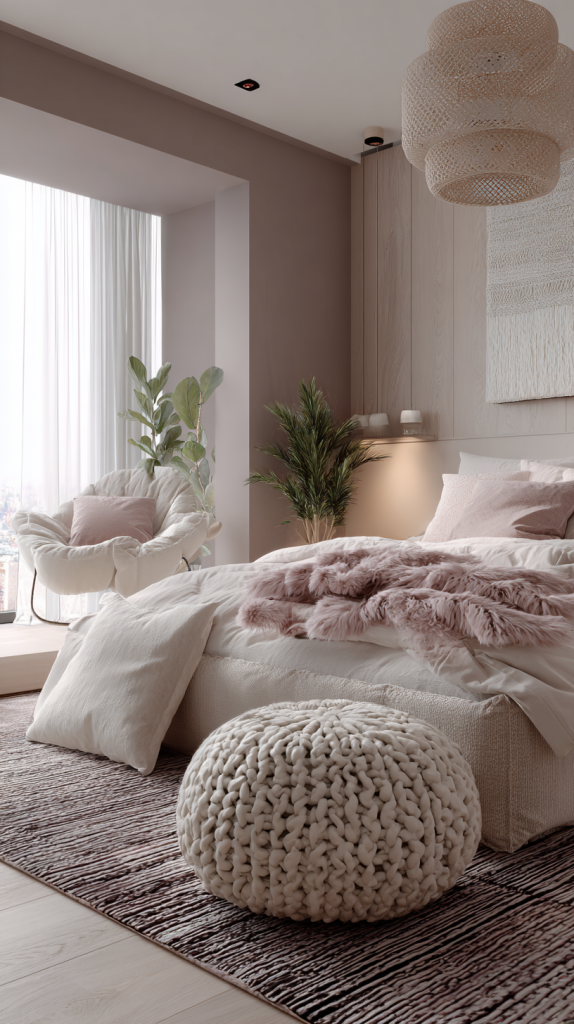

Bathroom Retreats
Bathrooms can also be peaceful spots. Choose fixtures and storage that add to the calm and cleanliness.
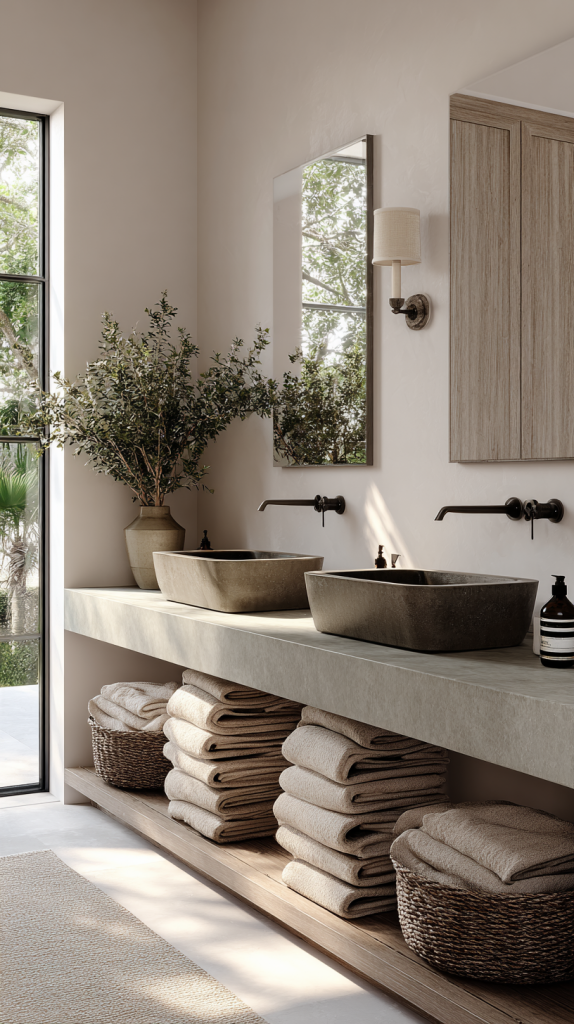
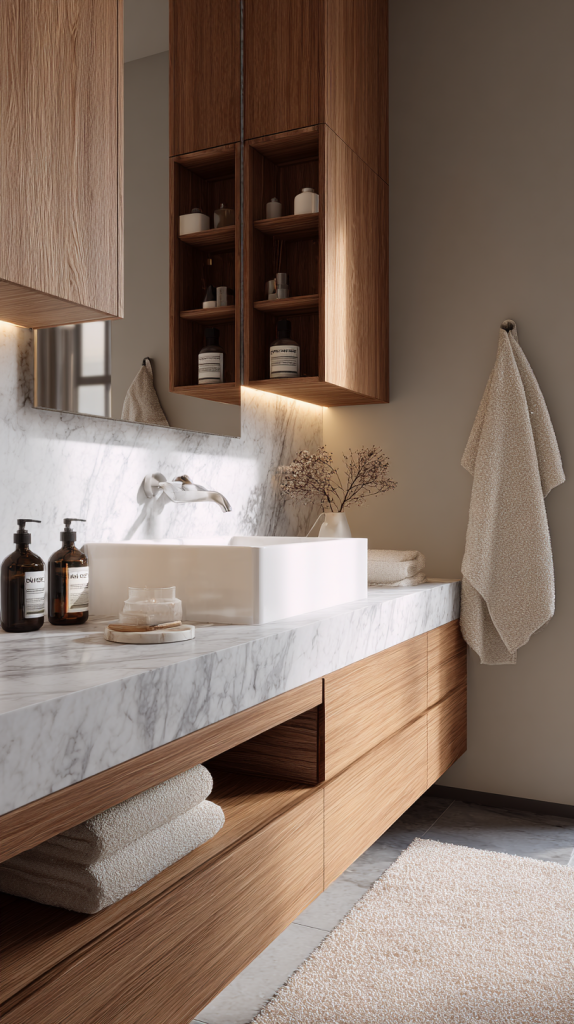
The Art of Accessorizing Your Space
Accessorizing is like painting a picture with your home. It’s the little things that make a room come alive. By choosing the right accessories, you can show off your style.
Textiles: Layering Textures and Patterns
Using different textures and patterns in textiles can make a room pop. Try mixing soft throw blankets, velvet pillows, and natural rugs for a cozy vibe. The goal is to find a balance so the room doesn’t feel too busy.
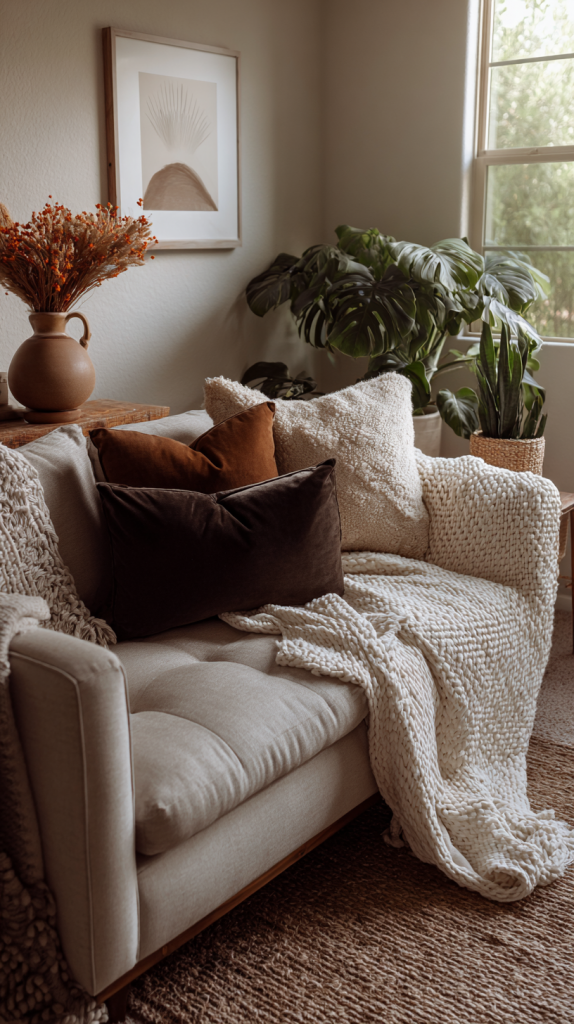


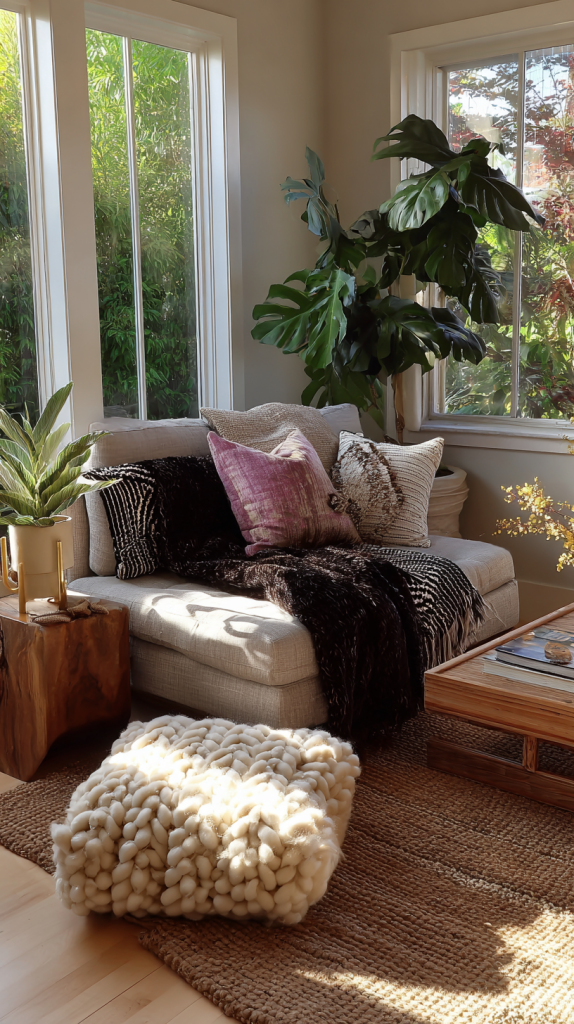
Wall Art and Gallery Arrangements
Wall art and gallery setups can make a space truly yours. Grouping frames of different sizes and styles can create a stunning focal point. Remember, choose art that fits your room’s colors and style.
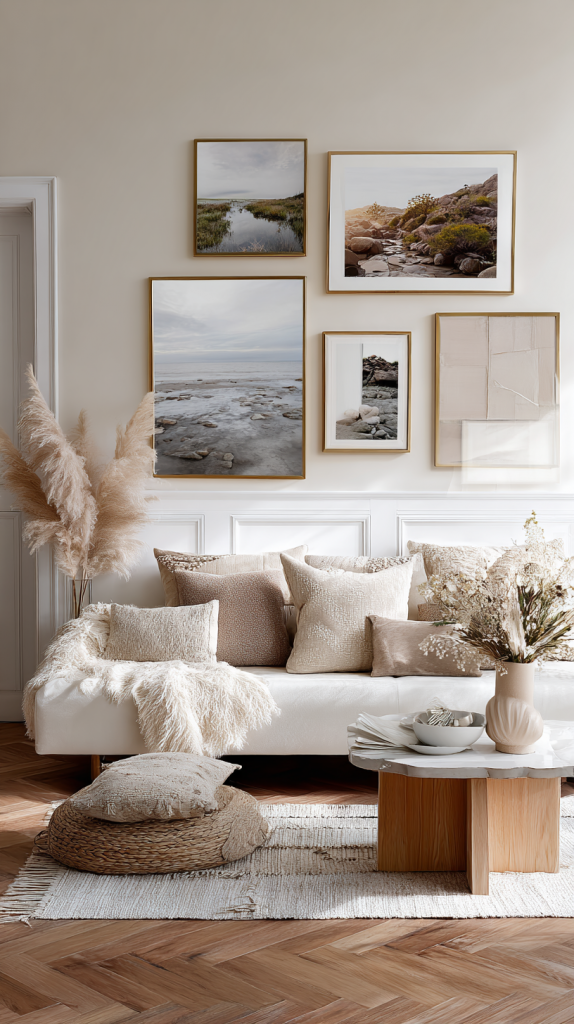

Decorative Objects and Personal Collections
Decorating with personal items can make a room feel special. It could be vintage finds, artwork, or keepsakes. The key is to pick items that tell a story and fit together well, avoiding clutter.
Principles of Interior Design for Everyday Spaces
Interior design is all about certain key principles. These principles help create spaces that are both beautiful and practical. They make rooms that are not just pretty but also comfortable and useful.
Balance, Rhythm, and Harmony
Balance, rhythm, and harmony are at the heart of interior design. Balance means arranging furniture, colors, and textures in a way that looks good. Rhythm comes from repeating patterns or colors to lead the eye around the room. Harmony happens when everything works together to look cohesive.
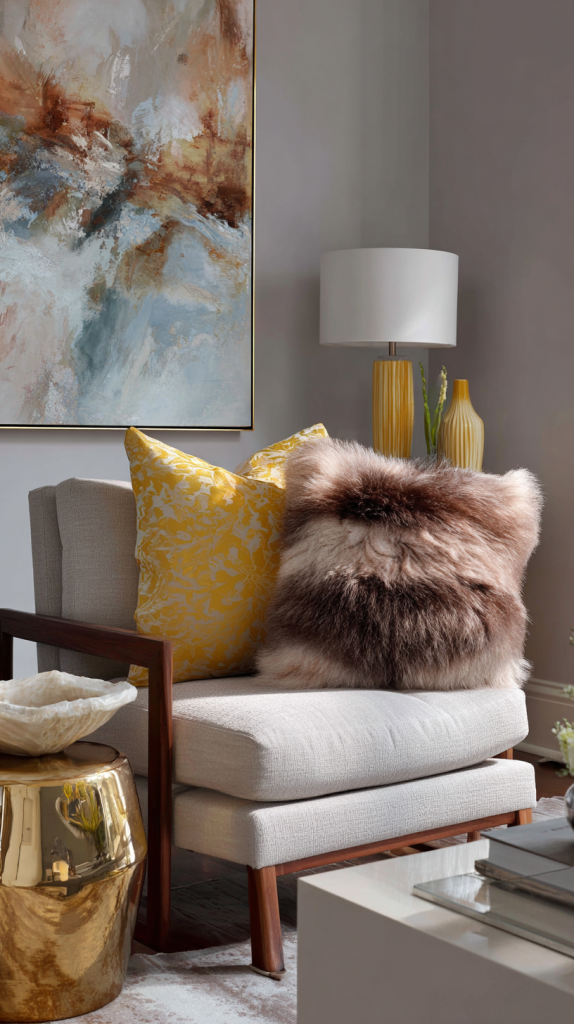
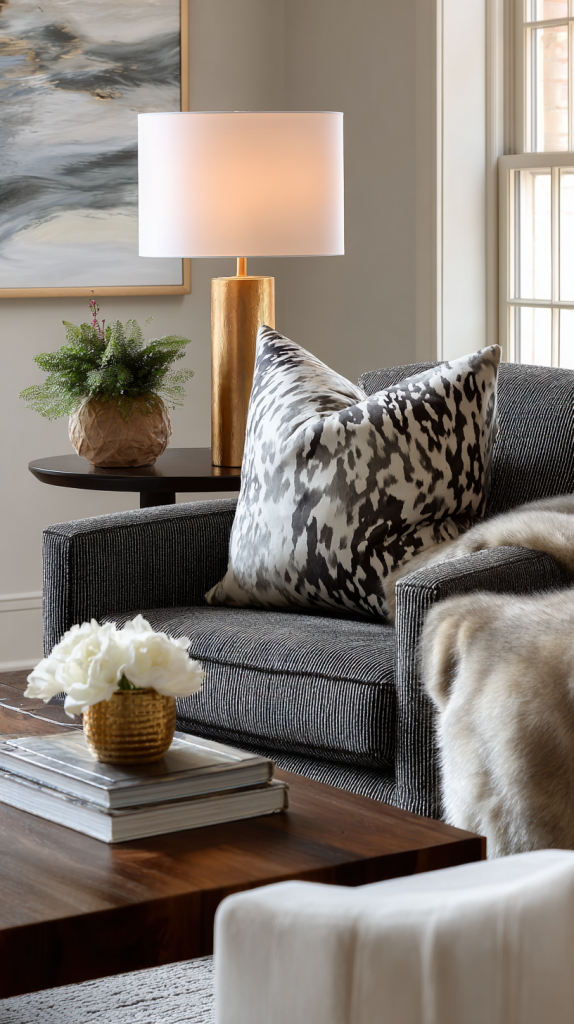
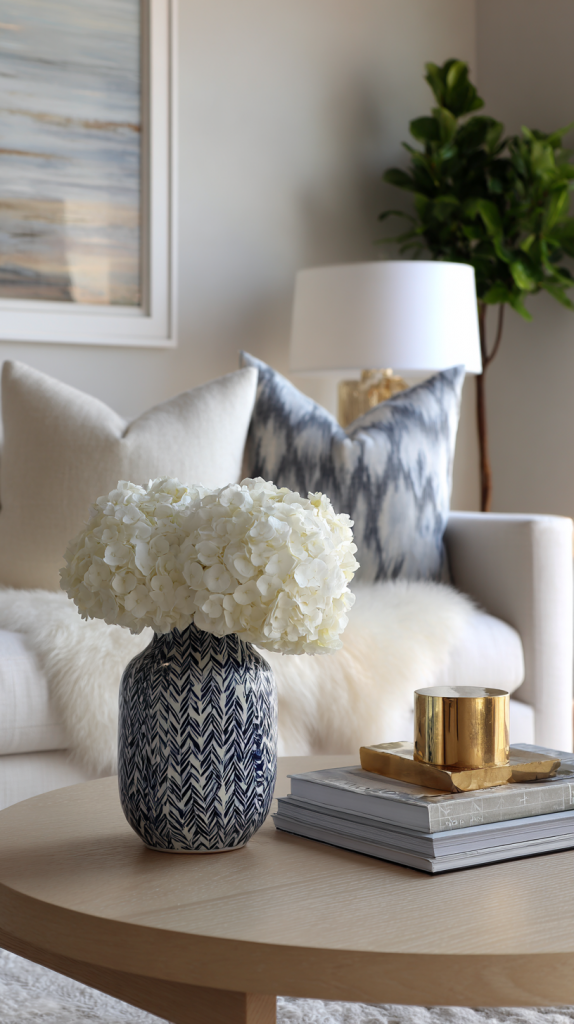
Scale and Proportion in Room Design
Scale and proportion are key to making furniture and decor fit right in the room. The right size ensures that everything looks balanced and feels right. This is super important in modern interiors where looks and function go hand in hand.
Creating Visual Interest and Focal Points
Adding visual interest and focal points brings life and personality to a room. This can be done with bold colors, standout furniture, or unique decor. By focusing on certain areas, you can make your space feel lively and full of energy.
Lighting Design: The Essential Element
Lighting is a key part of interior design. It can change how a room looks and feels. Good lighting can make a room feel cozy, show off its design, and even boost mood and productivity.
Layered Lighting Techniques
Layered lighting mixes different lights for a balanced look. It lets you switch between bright task lights and soft ambient lights easily.
Ambient, Task, and Accent Lighting
Ambient lighting lights up the whole room. Task lighting shines on areas where you work or read. Accent lighting makes special features or decorations stand out.
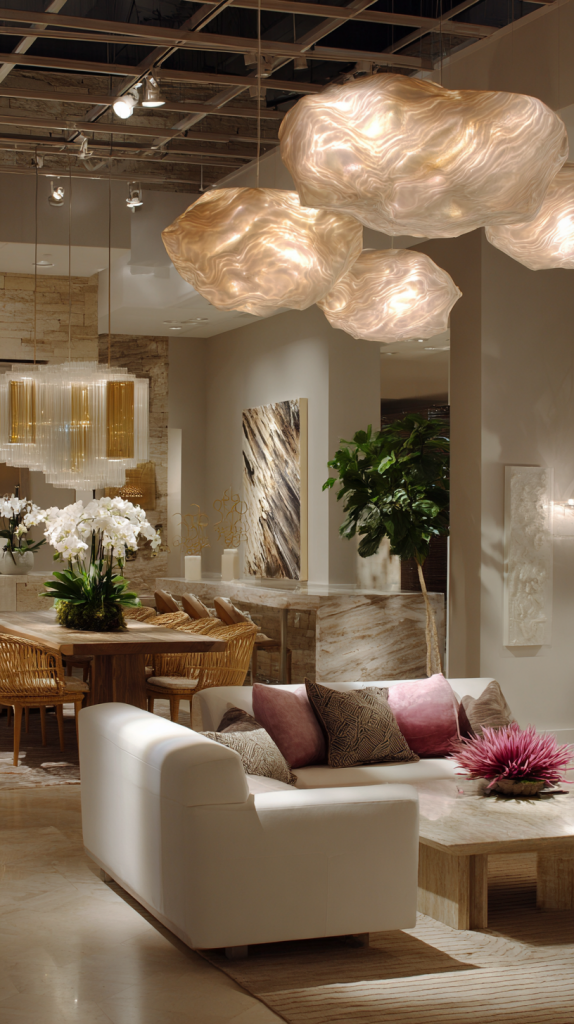

Statement Fixtures as Design Elements
Lighting fixtures can be eye-catching. They add personality and style to a room. Chandeliers and sconces can be the room’s main attraction.

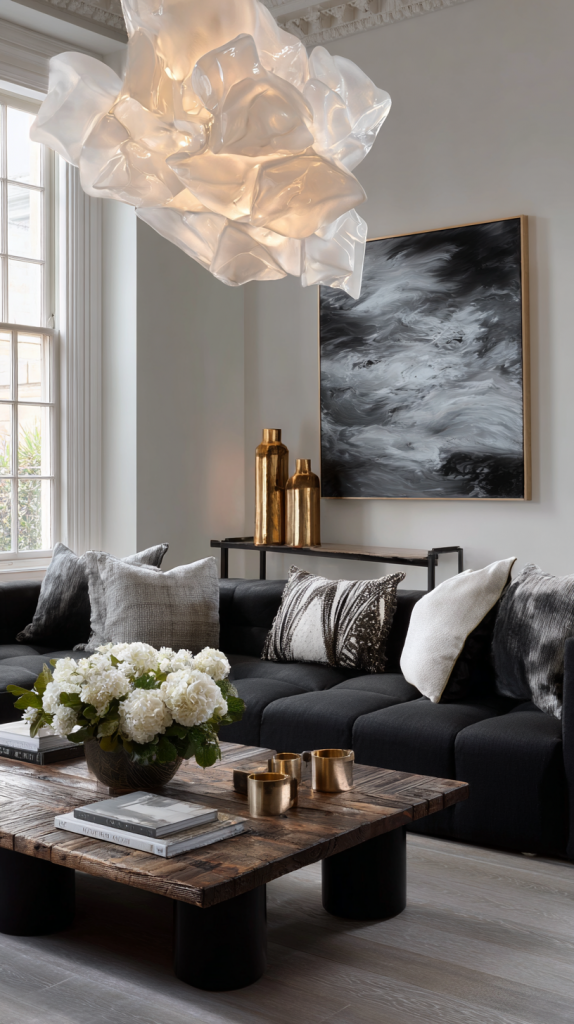
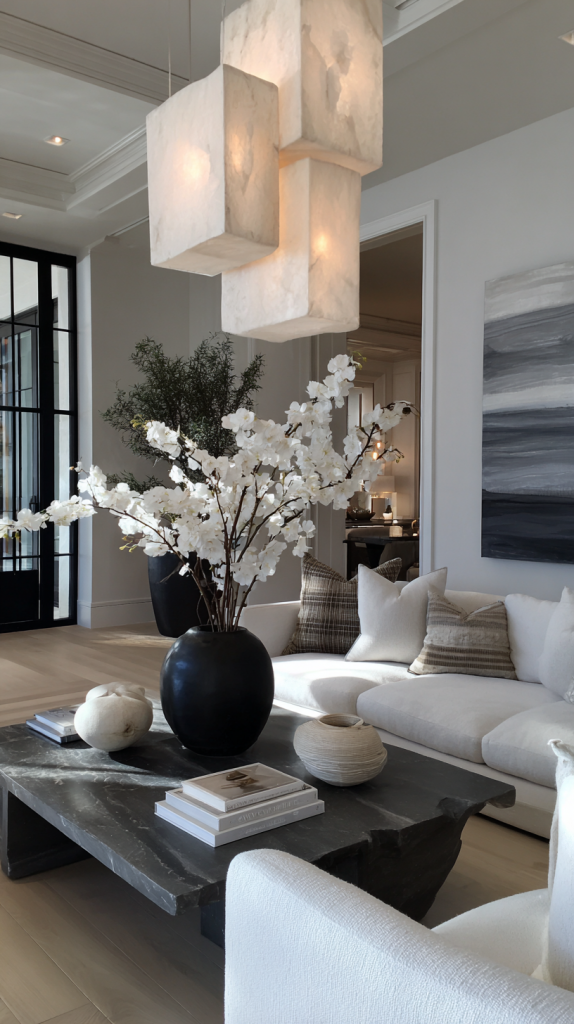
Natural Light Optimization
Using natural light makes a room feel better and saves energy. You can use mirrors to bounce light, choose window treatments wisely, and arrange furniture to let light in.
Smart Lighting Solutions for Modern Homes
Smart lighting is convenient, saves energy, and lets you control lights easily. You can set it to change light levels based on time or if you’re home. It makes your home modern and sustainable.
| Lighting Type | Purpose | Examples |
|---|---|---|
| Ambient | Overall illumination | Ceiling fixtures, LED panels |
| Task | Focused lighting for activities | Desk lamps, under-cabinet lighting |
| Accent | Highlighting decorative elements | Track lighting, picture lights |
Small Space Interior Design: Maximizing Every Square Foot
Creating a spacious feel in small homes needs creativity and smart strategies. Use vertical space, create illusions, and pick furniture that does more than one thing. This way, your small space can feel bigger.
Utilizing Vertical Space
Clearing floors and using wall storage can make a room seem larger. Think about putting up shelves or hooks to use your walls better.
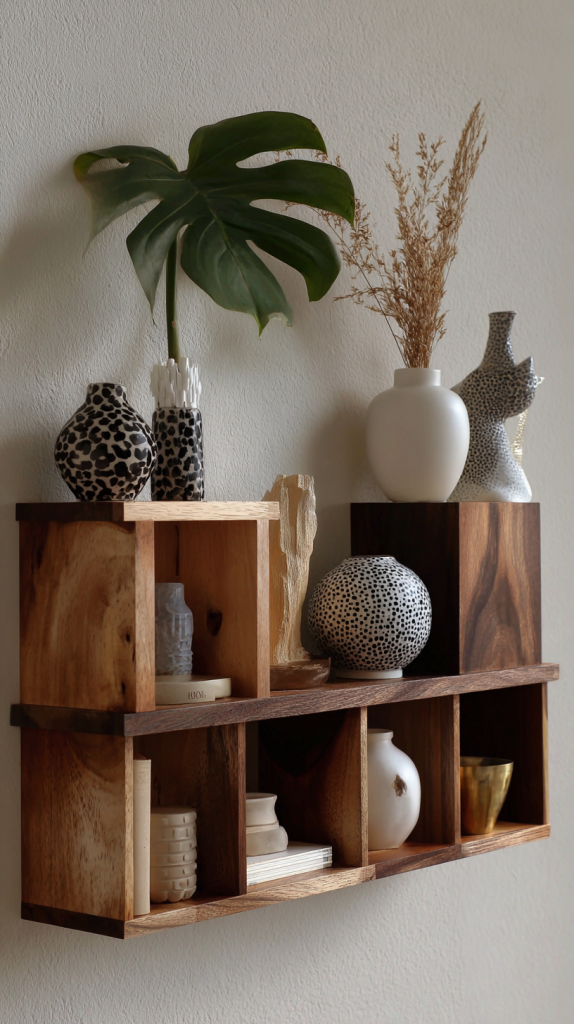
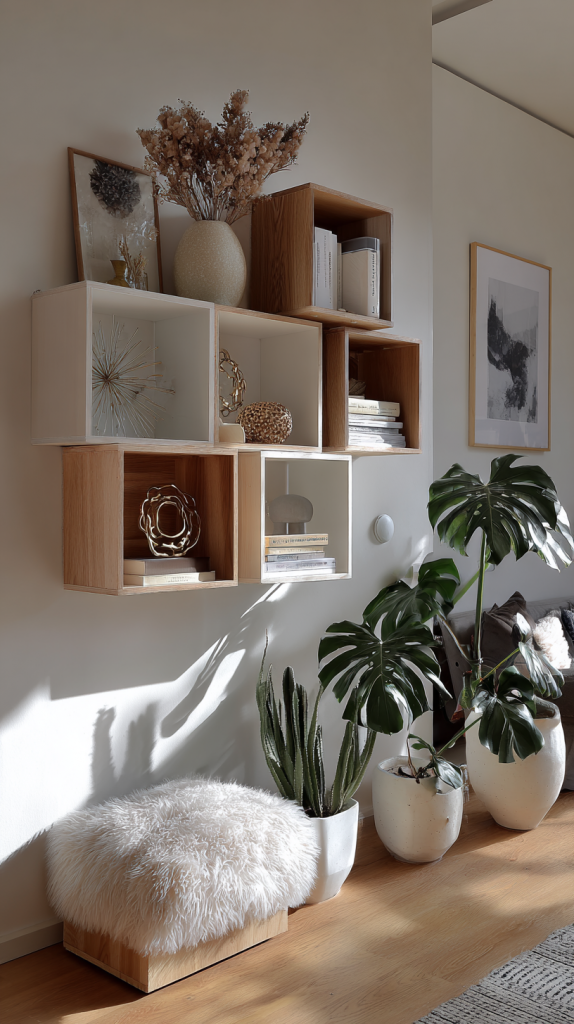
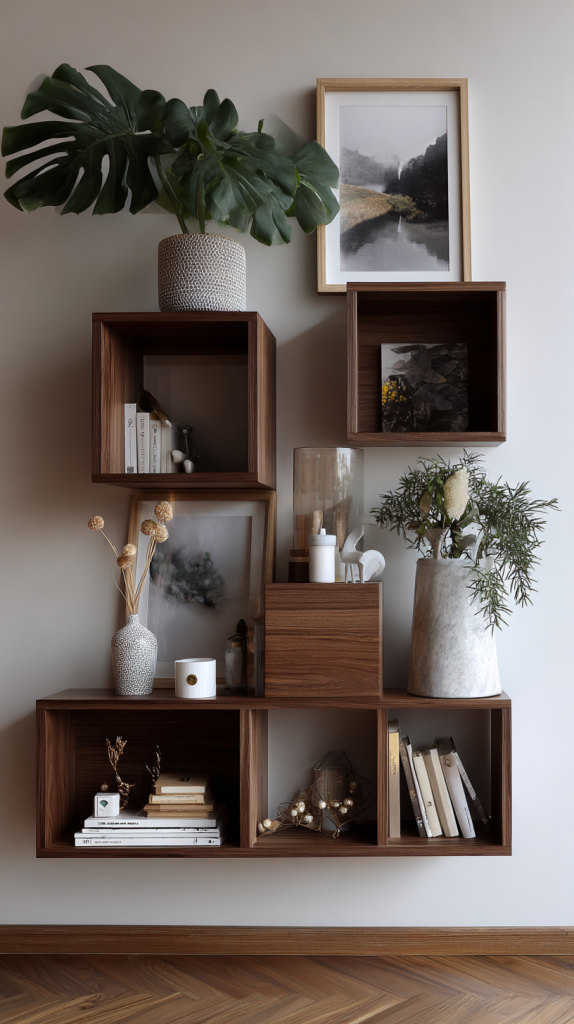
Creating the Illusion of Space
Tricks like mirrors and light colors can make a room look bigger. Mirrors reflect light and images, making a room seem larger. Light colors on walls and floors also make a space feel more open.
Multifunctional Furniture
Furniture that does more than one thing is essential in small spaces. Look for items like storage ottomans or sofas with built-in storage. These pieces help reduce clutter and add more function.
Budget-Friendly Interior Design Transformations
Budget-friendly interior design is all about being creative and making smart choices. You can change your living space without spending a lot. This is done through cost-effective methods that keep your space stylish and functional.
High-Impact, Low-Cost Updates
Small changes can make a big difference. Painting walls is a cheap way to refresh your home. Moving your furniture around can also change the look without spending more.
Changing your lighting or adding new textiles like throw pillows can also make a big impact.
DIY Projects to Personalize Your Space
DIY projects are a great way to make your home unique. You can make special decor items like macrame wall hangings or upcycled furniture. These items show off your style. Websites like Pinterest have lots of DIY tutorials to help you.
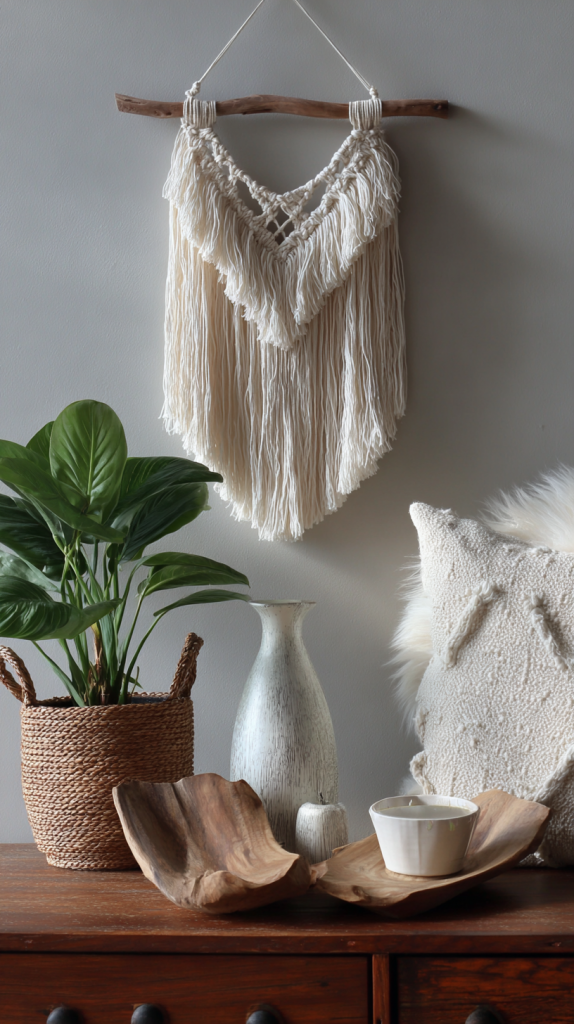
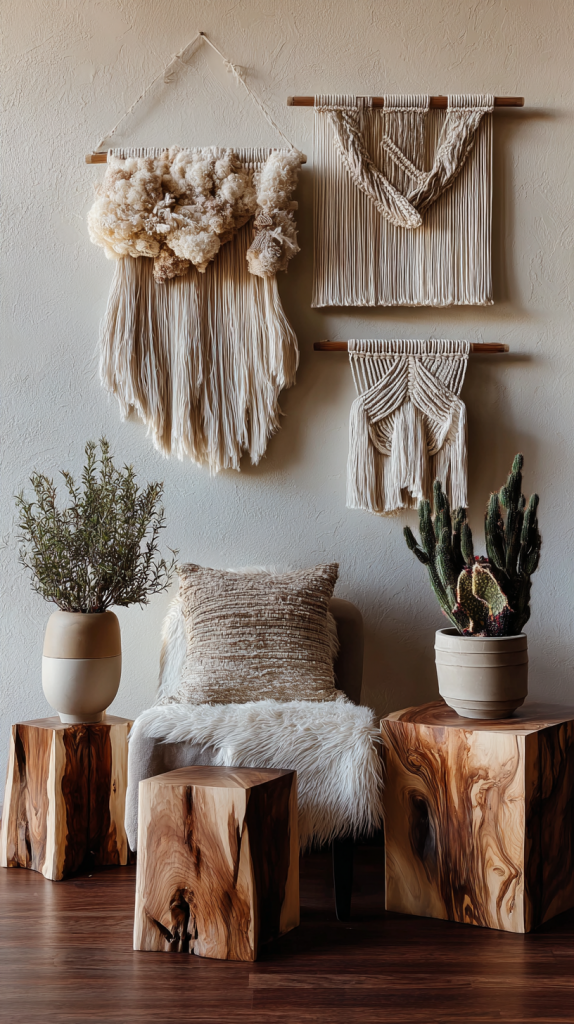

Strategic Splurges vs. Savvy Saves
Knowing when to spend and when to save is key when budgeting. Spending on quality items like a comfy sofa is worth it. But, saving on trendy items or using cheaper alternatives helps keep costs down.
For example, you can save by fixing up old furniture or buying during sales.
| Budget-Friendly Ideas | Cost Estimate | Impact Level |
|---|---|---|
| Painting Walls | $100-$300 | High |
| Rearranging Furniture | $0 | Medium |
| DIY Decor | $20-$100 | High |
Using these budget-friendly tips, you can make your living space stylish and useful without spending too much.
Conclusion: Creating a Home That Tells Your Story
A home is more than just a place to live. It shows who you are and your style. Adding personal touches makes it truly yours.
Renovating, redecorating, or refreshing your space? Stay true to your vision. Mix your style with your home’s decor for a welcoming feel.
This way, you’ll have a beautiful home that tells your story. It will show off your unique taste and decorating styles.


